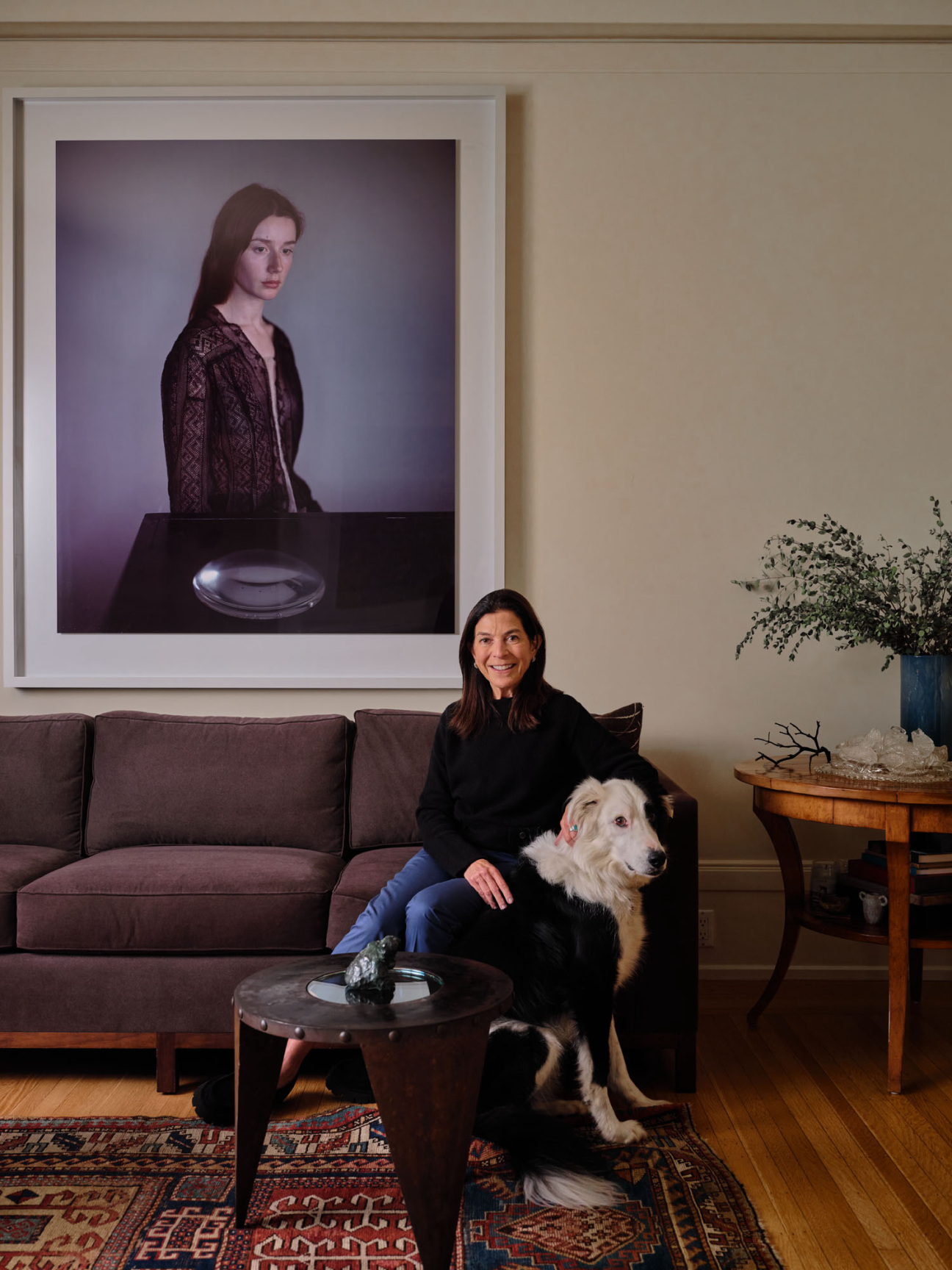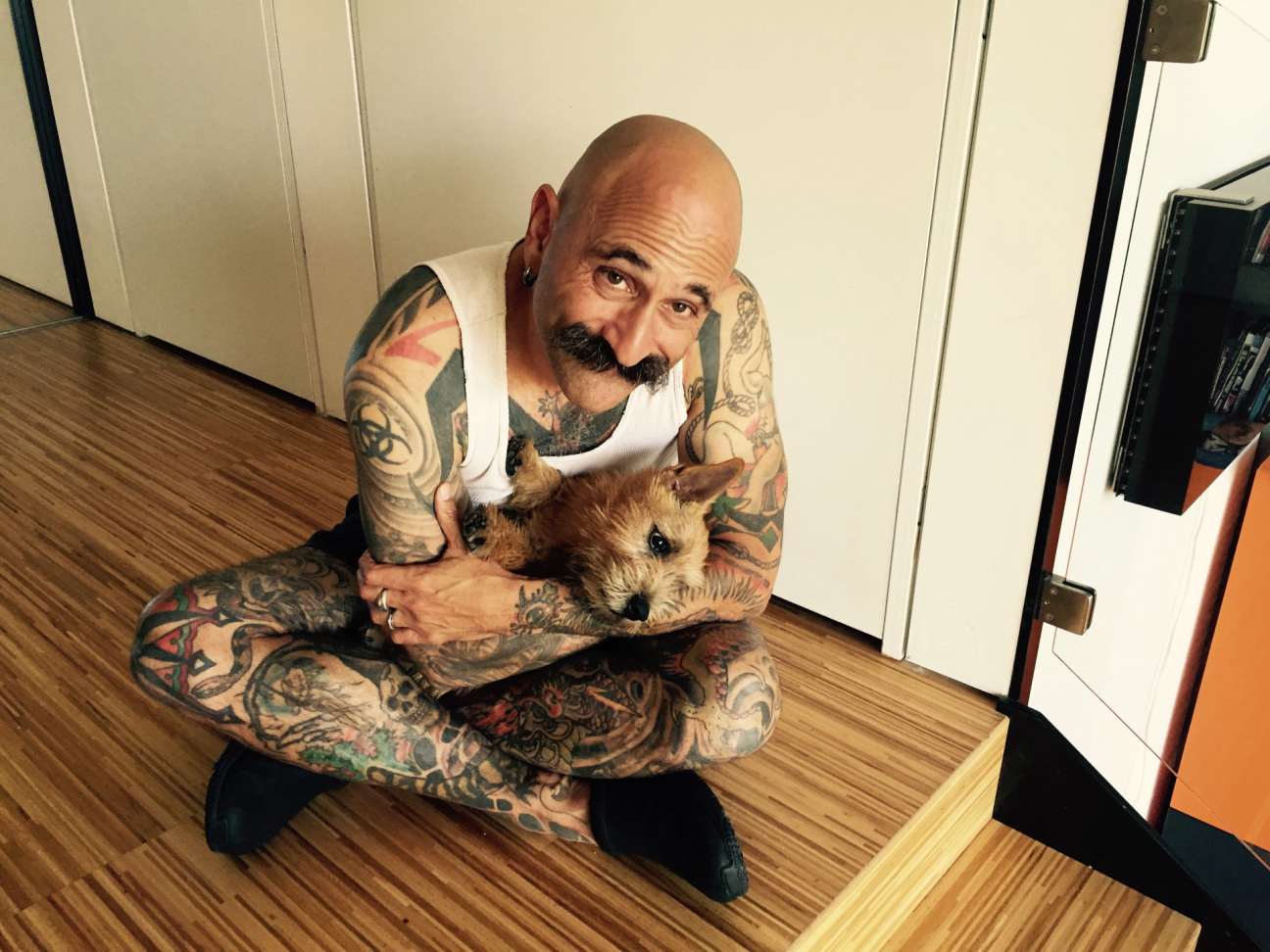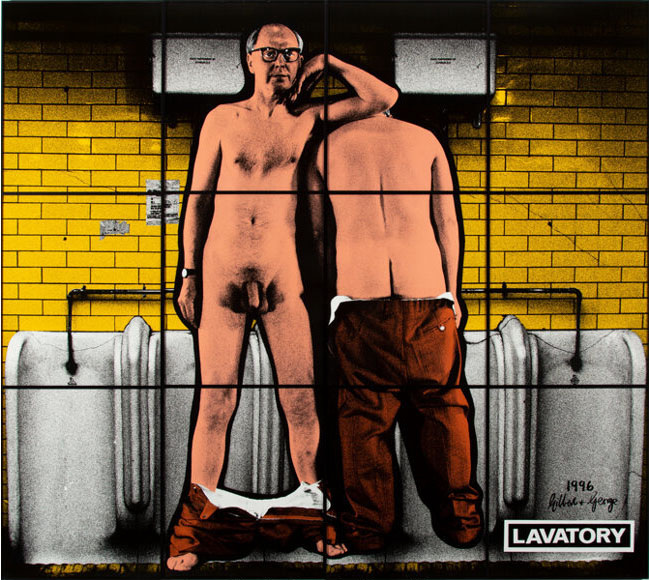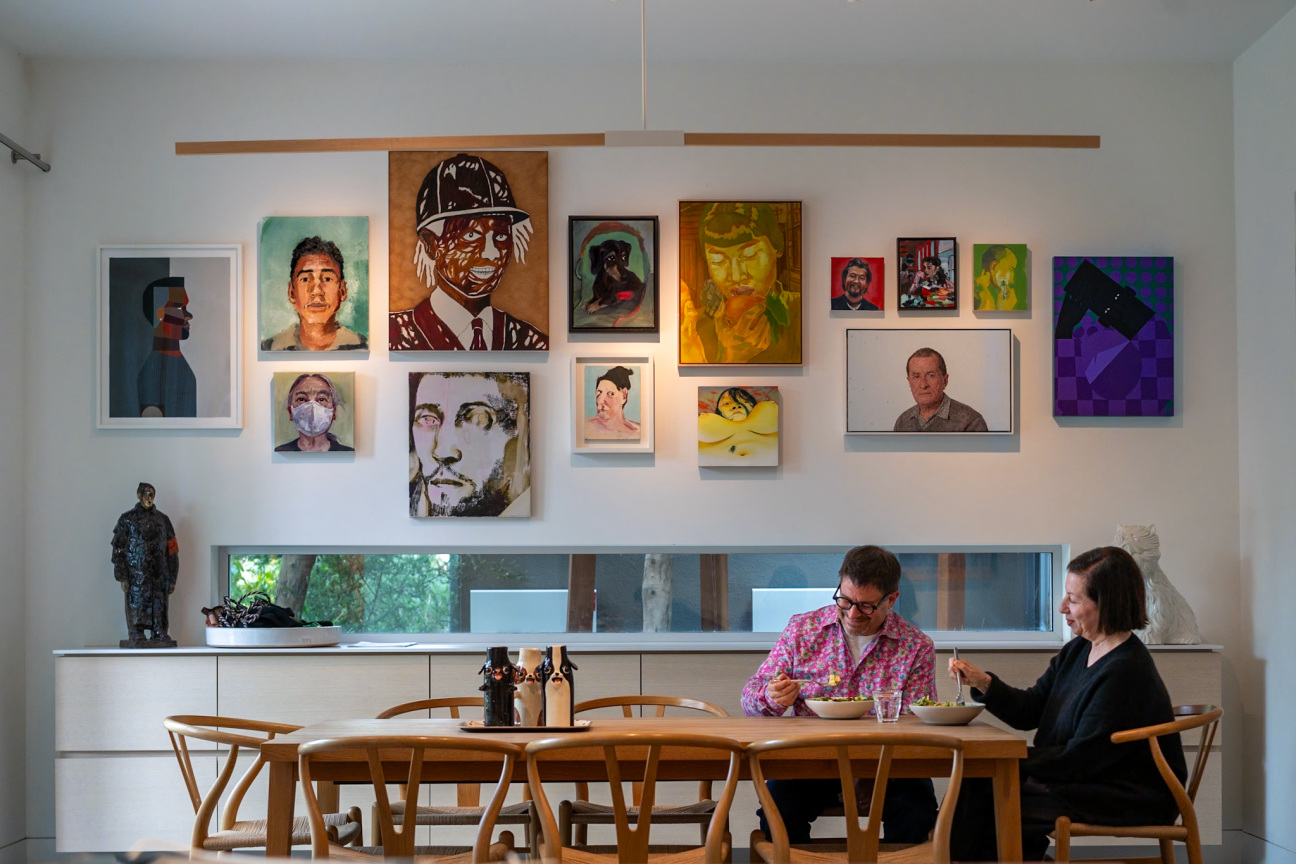
Susan Swig
Susan Swig is a philanthropist and art collector with deep roots in San Francisco (she is a fifth generation resident and cultural patron). Swig has been a trustee of the San Francisco Museum of Modern Art (SFMOMA) for more than 20 years and serves as a founding board member of the Institute for Contemporary Art, San Francisco (ICA SF), which opened in 2022. She is on the program committee of the FOG Design + Art, where she puts together the fair’s talks and panels.
What do you think makes the San Francisco art scene distinct?
San Francisco’s artistic community most definitely makes the art scene here distinct. We are a “team” working together to elevate the cultural vitality of the city, including supporting the artists who live here. This year, we’ve designed FOG as a love letter to San Francisco. I hope as you make your way through the fair you’ll feel that collaborative spirit reflected throughout with our artist installations, pop ups, and the entire tenor of the fair.
What are you most looking forward to at this year’s fair?
I have to say I’m a bit biased as I curate the programming at FOG, so naturally that’s one of the things I’m especially excited about. I like to “share the mic,” so you’ll find many of our local orgs and artists represented on stage. This year, we are are excited to highlight an array of voices from our local institutions, including the Headlands, the Yerba Buena Center for the Arts, SFMOMA, the Fine Arts Museums of San Francisco, Creative Growth, NIAD, and Creativity Explored, among many others, as well as a number of our talented local artists.
Any advice for a first-time attendee?
Plan on spending a couple of days at the fair. From visiting FOG’s 45 gallery offerings in Pier 3 and our nine new exhibitors in Pier 2’s FOG Focus, to grabbing a delicious pizza at A-16, a coffee and pastry from Jane, and joining us in the FOG theater for a talk or two, there’s a lot going on! Also, you shouldn’t miss Park Life, our retail shop, including our custom FOG totes that this year are designed by Tucker Nichols as well as José Figueroa, our artist in residence at the fair this year. You’ll most likely spot him around the FOG pier sketching away.
Next door is our newest addition, FOG Focus. There you’ll find nine first-time exhibitors alongside a series of great activations and installations, including Lucy Sparrow’s Feltz Bagel, an installation by Creative Growth, Creativity Explored, and NIAD, treats to eat at Postscript cafe, and a special Pierre Huyghe video installation from the Kramlich Collection that you just have to see.
Where does the story of your personal collection begin?
I bought one of my first paintings in the early ‘90s. I grew up surrounded by contemporary art as my parents were collectors. In fact, my mother was an art advisor and also served as a trustee of SFMOMA (today, we are both trustees, and the only mother-daughter duo serving simultaneously).
Back in 1990, I was visiting SFMOMA with my mother. There was an exhibition of photographs by Dawn Fryling, a young San Francisco artist. These were a series of large photographs of pieces of toast in their different iterations—dark toast, burnt toast, lightly toasted toast—all framed identically. It was a typology of sorts, and I fell in love with them. Somehow I learned that they would become available after the exhibition closed, so I put my name on a list and was able to acquire one from one of my favorite gallerists at that time, Paule Anglim. To this day it remains on a wall in my house, and I marvel how it is still one of my and my children’s most beloved pieces.
Which work or works provokes the most conversation from visitors?
People are always drawn to the large Richard Leayroad photograph that hangs in my living room, which I purchased from Fraenkel Gallery, and a beautiful painting by Greg Breda, an LA-based painter, that I bought from Patron Gallery in Chicago.

Which artist are you currently most excited about and why?
There are too many to choose just one, but I’m currently paying attention to Patrick Martinez and Suchitra Mattai. Patrick’s exhibition is just closing at ICA SF, and Suchitra’s will open there later in 2024.
Is there one piece that got away, or that you still think about?
This isn’t exactly an answer to the question, but it could have been the “one that got away.” I am a great fan of Jeffrey Gibson, who was our inaugural artist at the ICA SF. I’m so proud of him for representing the U.S. at the Venice Biennale this coming year. I visited him at his fabulous studio in Hudson, New York—a space which is chock filled with curiosities, materials, and his assistants assembling his paintings and sculptures. It was pretty spectacular and I felt like a kid in a candy store.
Jeffrey walked us through his studio, opening cabinets and flat files and doors to rooms filled with many of the gorgeous ingredients he uses in creating his work. When he opened one file, he revealed a smallish work which was a gem. I heard him remind himself that it was for an auction benefiting MAD (the Museum of Art and Design in New York). I logged that info in my brain and then later that night went to the MAD website where I found that this little piece would be auctioned the next day. The only reason I was so aware of what MAD stood for was because I had spent the previous day at the museum where I visited Machine Dazzle, an artist who I’d enlisted to speak in one of the programs at FOG. It was meant to be, I suppose, as the next day that little Jeffrey Gibson treasure became mine, and I am now very attached to it.

Jeffrey N. Dauber
Jeffrey N. Dauber was born into a family of collectors and has been building his own art holdings since the late 1980s. The former Apple engineer played a key role in developing the ICA SF, where he is on the board. Never afraid to collect something others might find off-putting or explicit, he is known for his predilection for confrontational and politically engaging art.
What do you think makes the San Francisco art scene distinct?
San Francisco’s art scene is smaller and more open than the scenes in New York, LA, or Europe. The gallerists welcome buyers of all levels of collecting. You do not need to have a long resume to buy at the galleries here. This makes it an easier and more welcoming place to start learning how to collect.
Any advice for a first-time attendee?
Talk to the gallerists. They don’t bite and will be happy to talk to you about the works. Asking questions doesn’t mean you have to purchase the works.
Where does the story of your personal collection begin?
I am a dyed-in-the-wool collector. I’ve collected books, plants, music, and tattoos in addition to art. The fun part is educating yourself about what you collect and where to find things to your taste. Year-after-year, I have learned more about the artists I love and where to find them. When I started to have disposable income in the late ‘80s, I began by purchasing photography by local artists, and from there, I found my way into more galleries and more things I love.
Which work or works provokes the most conversation from visitors?
I have been collecting challenging work from the first work I acquired. I feel that art holds a unique place in the world where it can force difficult conversations with beauty. I love works where artists aggressively assert their identity and point of view. I have a Kara Walker (Untitled, 1991) which deals with sexual assault during the slave era. I have several pieces from Carrie Mae Weems’s “From Here I Saw What Happened and I Cried” series, which deals with the brutality of slavery. I have a work from the Judy Chicago “Birth” series, which presents a female perspective of life in a predominantly male world of art. I have works by Robert Mapplethorpe, Larry Clark, and Peter Hujar that deal with gay male sexuality. It is all meant to force the viewer, both a visitor to the collection and myself, to deal with these issues.
How has the local art scene influenced your collection?
The San Francisco scene is where I cut my teeth on collecting fine art. When I started collecting in the late ‘80s and early ‘90s, aggressively challenging work was a strong theme in San Francisco during that time. From Al Farrow to Travis Somerville, the artists showed me that there are large scale works with very challenging material that are beautiful and available.

Which artist are you currently most excited about and why?
I am extremely excited by Narsiso Martinez, who is shown by Charlie James Gallery. He does works showing the agricultural worker on produce boxes that aggressively assert the identity of people whose existence is ignored by most Americans, and certainly most people who have the means to collect fine art.
What factors do you consider when expanding your collection?
I only have one consideration: Do I love the work? I don’t have any other criteria. If I love the work and it provokes a reaction, I look to acquire it. I don’t worry about value, career, or anything else. It is simply the power of the work.
What was the most challenging piece in your personal collection to acquire?
For many years, I had wanted a Gilbert & George work that was more challenging. This meant that I was looking for an early work, not work from their later career. Being forced into the secondary market leads to years of waiting and disappointment when you are outbid. In addition, very challenging work does not appear at auction as often, so there were many that were just too safe for me. When Lavatory, 1996, became available, I knew it was for me. Fortunately, it was at a more obscure auction house, and I was able to acquire the work without anyone bidding against me.
Is there one piece that got away, or that you still think about?
In 2009, there was a Nick Cave work made of found objects with a lawn jockey and ships that blew my mind. I saw it too late and when I reached the gallerist, it was already sold. The story has a happy ending. Last year, it appeared in auction, and I was able to acquire it. It just shows that with patience and a great deal of luck, you can still get the one that got away.

Pamela Hornik
A collector with a keen eye for emerging artists, Pamela Hornik got her start working at the front desk of the Cantor Art Center at Stanford University. Today, she serves on the director’s advisory board at the Center as well as on the management committee at the Anderson Collection, also at Stanford. With her husband, venture capitalist David Hornik, she gave an unrestricted $1 million gift to the then-fledgling ICA SF. An exhibition of dog-themed art from their collection will be on view at the Green Art Foundation in Dallas in February.
What are you most looking forward to at this year’s fair?
I admit it is somewhat shameless that the thing I’m most looking forward to is the conversation between my husband David and Troy Carter that is taking place on the Saturday of the fair. David and Troy have been friends for a long time. David is a tech VC who is involved in company creation. Troy has been a longtime innovator in the music world, having managed Lady Gaga and John Legend. And both are fanatical contemporary art collectors. It will be fun to hear how they think about the intersection of innovation and art.
Any advice for a first-time attendee?
Art fairs can be overwhelming. This year, we have a section of the fair called the FOG Focus that is a smaller curated space of galleries showing young artists. It will be a great place to start. Think of it like base camp. It will help get you acclimated before you dive into the main fair. I’ve also learned over time that it is worth coming back to an art fair more than once. You see new stuff every time you walk through. And galleries often put out new art over the course of the fair.
Where does the story of your personal collection begin?
The front desk of the Cantor Arts Center at Stanford. About 15 years ago I started volunteering at the Cantor. I had spent the previous dozen years focused on all things kids. But as my fourth kid settled into elementary school, I was able to reclaim some time for myself and discovered how powerfully art could engage both my mind and my heart. Over time, we took the whole family on weekly art adventures—to museums, to galleries, to art studios. It remains my favorite way to spend a weekend or vacation. And I still work at the front desk of the Cantor.
Which work or works provokes the most conversation from visitors?
A pair of life-sized smiling Yue Minjun sculptures live under our stairs. As visitors to our home round the corner, they inevitably jump, then laugh. They are an oversize presence in the house. I was just having dinner with my nephews, and we had a long conversation about all the places we could place the Yue Minjuns to surprise passers by. We’re still talking about it.
How has the local art scene influenced your collection?
I had the good fortune to help launch the new Institute of Contemporary Art in San Francisco last year. Along with showing some amazing international artists, the museum has had a dedicated space to feature local Bay Area artists for the past year. I fell in love with the work of Rupy C. Tut at the ICA and have recently helped a local Bay Area institution acquire her gorgeous work.

Which artist are you currently most excited about and why?
It is always changing. Not because I’m indecisive, but because art and artists are always changing. We were lucky enough to acquire an epic painting by Dominique Fung which towers over our stairwell. It is probably the piece I stop and stare at most. I was recently in London and visited Dominique Fung’s show at Massimo de Carlo. I was surprised at how exciting I found her sculpture. They spoke so powerfully to the paintings that I couldn’t help but acquire one. Now I just need to figure out where to put it.
What was the most challenging piece in your personal collection to acquire?
I have an amazing portrait of Sasha Gordon holding her dog, painted by Oscar yi Hou. Oscar’s work is just unimaginably fantastic. I would happily acquire anything he paints. But the painting of Sasha was even more amazing because an unreasonable fraction of our collection is of art with dogs, so it was perfect for me. Despite begging Oscar’s gallery to sell me the work, it took a visit to the Brooklyn Museum, where Oscar had a spectacular exhibition of his work, with the director of the Cantor Arts Center in order to personally promise the work to Stanford’s museum before we were able to buy the piece. It is currently on its way to Dallas, where it will be part of an exhibition of our dog art at the Green Family Foundation.
Is there one piece that got away, or that you still think about?
One of the things I love about art is that there is always incredible new work to be seen. My husband saw the work online of a fantastic young female artist and reached out to her gallery to see if they had any paintings available. They offered us a few paintings, but one in particular stood out. It was of a young woman wearing a Stanford letterman jacket. The painting was gorgeous but, sitting in the Stanford museum each week, it felt a little too on the nose, so we passed on the work. That was a mistake. Not just because that artist was Amy Sherald and her work became impossible to acquire after she painted the majestic Michelle Obama, but because it would have been the perfect piece for our collection and even better for the Stanford museum. Oh well, there have been others. And there will be more.
Want to read more from collectors around the world? Read Jahi Sundance on why all forms of art should be treated with equal respect, David Cancel‘s on helping Puerto Rican artists find their way into museums, or how Erin Leider-Pariser discovered collecting while working at Beth Rudin DeWoody’s personal trainer.
